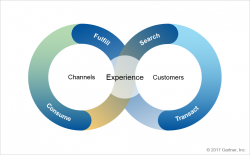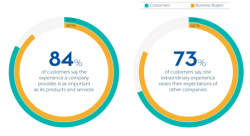Unified Commerce Part 1: What is Unified Commerce?

Unified Commerce is a relatively new retail term which is steadily gaining more attention. But what does it mean?
- Some retail experts say Unified Commerce is consolidating sales channels into a single software.
- Others think it is a buzzword that is not much different from the well-known term omnichannel.
- A few see it as a way to convince retailers to invest in technology change.
This blog is the first blog in a series of three. With these series, we try to put an end to the speculations about Unified Commerce for once and for all.
This first blog is devoted to the explanation about what Unified Commerce is. The second blog will be about the difference between Omnichannel and Unified Commerce and in the final blog you can read about what benefits Unified Commerce can bring to your business.
So, let’s start by taking a look at Unified Commerce.
Unified Commerce Explained
There are many conceptions about what Unified Commerce is.
This quote by research firm Gartner gives a good first look at the core meaning of Unified Commerce:
“Unified Commerce is the practice of providing flexibility, continuity, and consistency across digital and physical channels to deliver a superior customer experience. This consistency includes multiple phases of the customer’s buying journey, including when a customer is searching, browsing for, transacting, acquiring and consuming a product or service.”

To put it simply, it means that regardless of the journey the customer has taken, or what touchpoints they’ve used to make a purchase, their customer experience should remain the same: frictionless.
Providing a Great Customer Experience with Unified Commerce
By answering the question: ‘What is Unified Commerce’, we can conclude that Unified commerce is essential to meeting customer expectations. But why is this so important?
To understand the need for Unified Commerce, one must understand the contemporary buying-and-selling landscape. Nowadays, the way products are sold are dictated by customers who use multiple channels to engage with a brand before making a purchase. Research suggests that more than 73% shop across channels! Therefore, retailers are keen to start with omnichannel selling. However, this also means maintaining a great customer experience across channels.
Research by Adyen concludes that 84% of retailers have seen customer expectations rise in recent years. Current consumers expect a seamless customer experience with a high level of service, logistics, and personalization, in all channels they shop in. To be able to meet these expectations as a retailer, a unified strategy is essential.

From a patchwork of applications…
To sell in multiple channels many retailers use a patchwork of business applications. Point-of-sale (POS), marketplace software, e-commerce platforms, Customer Relationship Management (CRM), Enterprise Resource Planning (ERP), and Order Management software are just a few examples. In practice, it means that businesses are using a maze of integrations that cannot truly communicate. Consequently, the systems are unable to deliver the experience that customers are looking for.
…to a unified experience
The key to providing a great customer experience lies in consolidating sales channels and back-office processes. Unified Commerce systems integrate any sales channel, such as e-commerce, brick-and-mortar stores, and marketplaces, into one platform. Within this platform, merchants manage inventory, order fulfillment and product information throughout the different sales channels.
In turn, it allows customers to shop whenever, wherever and with however they want. As all processes are managed within one platform, true omnichannel experiences can be offered. This includes services such as buy online, pick up in-store, return in-store, one-day delivery, order splitting, omnichannel customer service and much more.
“Unified Commerce results in the ability to drive a top-notch, frictionless, non-frustrating and valuable customer experience.” Source: Chain Store Age
A quick sidenote
When speaking about Unified Commerce, we think of an ideal scenario in which businesses can use just one piece of software for all their back-office operations. However, there may never be a truly singular solution that can do so. Therefore, in practice, it often means that Unified Commerce refers to a tight-knit stack of technology. It provides merchants fewer pieces of software, that are better integrated and that can communicate.
In Short…
So in short, what is Unified Commerce and why is it so important?
Doing business is all about meeting customer expectations. It is important to be present in different sales channels and offer seamless customer experiences. For most businesses, back-office processes that come along with these different sales channels, are a true challenge. Unified Commerce gives merchants full visibility into all processes through all channels and it ensures a high level of consistency and continuity which seamlessly guides customers through their purchase journey.
Curious about the difference between Unified Commerce and Omnichannel? Stay tuned by subscribing to our newsletter and be the first one to know when the next blog will be published.
Back to blog